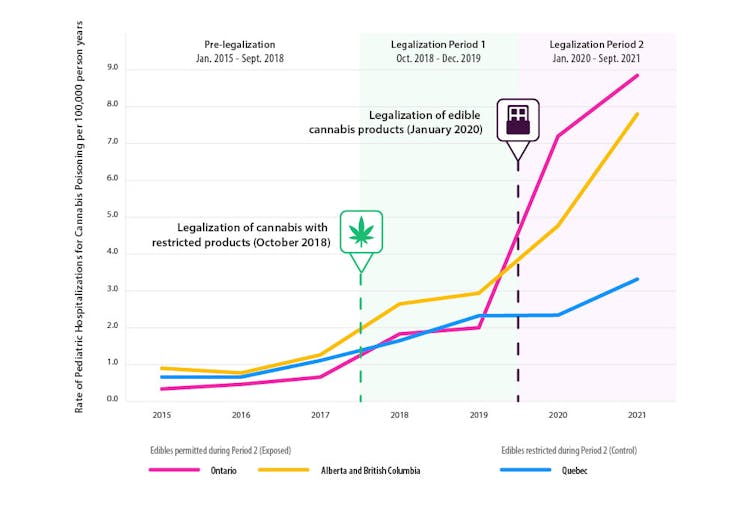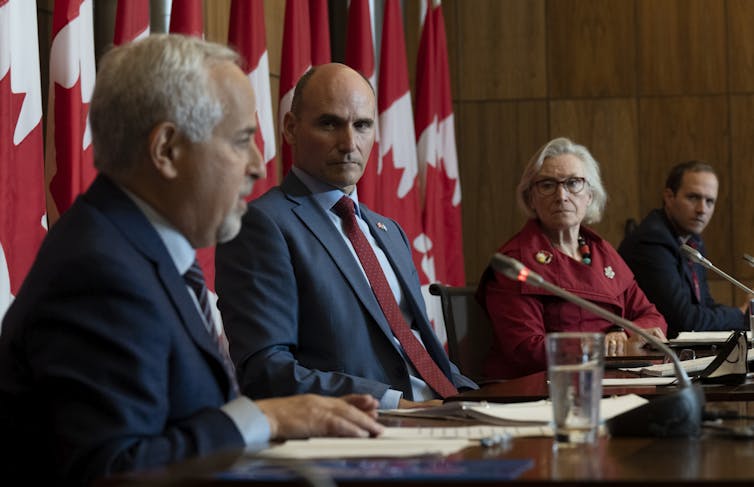
USA & CANADA (901)
Latest News
Nelson Mandela’s personal items under the hammer in New York? Why it outraged some, and what’s at stake
Wednesday, 31 January 2024 05:09 Written by theconversationNelson Mandela revisiting his cell at Robben Island prison. The image was sold to support his charitable causes. Louise Gubb/Corbis via Getty Images
An identity document, a pair of reading glasses, a hearing aid and a pair of worn shoes. These are just some of Nelson Mandela’s personal items that were due to go on auction on 22 February 2024. A month before the auction was due, the New York-based Guernsey’s auction house put a notice on its website that it was suspending the sales. No explanation was given.
The initial news of the auction caused outrage. South African government officials, commentators on South African social media, and even members of the family of South Africa’s late former president expressed shocked disbelief.
In December 2021 the auction published an auction catalogue – subsequently removed on 30 January 2024 – promoting many personal items, as well as the key to Mandela’s cell on Robben Island, where he was imprisoned for 18 years for his opposition to apartheid. Makaziwe Mandela, Mandela’s daughter, who consigned the items for auction, stated that proceeds from the sale would go towards the building of a memorial garden in Qunu, the rural settlement where he was born.
On 23 December 2021, the UK Daily Mail published a sensational news item reporting that the key was expected to fetch £1 million (US1.27 million).
The South African Heritage Resources Agency, which coordinates the identification and management of national heritage, learned of the auction through the report. It contacted the auction house, ordering it to stop the auction immediately. It claimed that the items were heritage objects and that they had been exported from South Africa without the relevant permits.
Makaziwe Mandela responded, arguing that the items were her private possessions.
The South African Heritage Resources Agency, the Robben Island Museum and the Department of Sports, Arts and Culture took the case to the Pretoria High Court. The court found that the items weren’t heritage objects because, among other things, the language that describes a “heritage object” that the state was arguing for was too broad.
Heritage is always contested. The state, the nation, private individuals and the market often have competing stakes in making claims to – and about – the cultural value that heritage holds. At times courts are enlisted to mediate such disputes.
Many South Africans have a strong personal relationship with Mandela. The outrage directed against the proposed auction can be traced to the personal and intimate nature of the items. And the fact that their sale feels like transgressing a moral boundary of familial respect.
In addition, given his political stature at home and globally, there are many who feel the auction crossed a cultural boundary. The items being put on the block are special for the nation and are tied to the post-apartheid story of the struggle for freedom and democracy.
This value is intuitively understood as heritage.
As a scholar of the cultural construction of heritage and contested public culture, I find this dispute a fascinating illustration of the shifting dynamics of heritage adjudication after 30 years of democracy. Where once heritage was about reconciliation and nation building, it is ever more about struggles over ownership, private property, cultural value and economic gain.
Judgment
The Pretoria High Court handed down its judgment on the basis of the facts brought before it.
In its arguments before the court the South African Heritage Resources Agency quoted sections of, among others, the National Heritage Resources Act, which protects heritage objects, or things deemed as such on the basis of their
association with political processes, events and figures and leaders in South Africa.
But in its judgment, the court found that definition the state wanted for heritage status was
so overbroad that just about anything that President Mandela touched or is associated with, or related to him, can be considered a heritage object.
It asked how these items could be termed heritage items while the “tens of hundreds of Springbok Rugby jerseys or ruling party attire autographed by Nelson Mandela on the campaign trail” were not.
The justices also inferred that items should have extraordinary qualities of great national significance for them to be registered as heritage objects. The Mandela items, many of which were as ordinary as reading glasses and his hearing aids, did not seem to meet that criterion.
Yet, there is a precedent for such use, such as Mandela’s red Mercedes displayed at the Apartheid Museum. Objects telling meaningful stories have also been curated and displayed at the museum marking the place at which Nelson Mandela was once captured.
Nevertheless, it was for these reasons that the items were not declared heritage objects.
Contested terrain
Concern about the heritage value of the items is well founded. By definition it raises questions about the South African Heritage Resources Agency and its role as a custodian of national heritage.
Possession comes with all kinds of responsibilities of care and public education. In making its case, the agency did not present a custodial plan including an assessment of the items, the museums to which they would go once they were repatriated and the exhibitions and educational projects they would potentially be used for.
There was also no mention of how costs for this curatorial custodianship would be carried.
Without any of this the question arises: if we believe that these objects do belong to the nation under the South African Heritage Resources Agency’s care, what benchmarks can be used to assess its ability to effectively manage and publicise Nelson Mandela’s legacy?
On the other hand, it’s not entirely clear that these items should be available for private sale either, even if it is to contribute to the social good of memorialisation. Could they not have been better used as displays in the memorial garden in Qunu, and then create a sustainable heritage tourism attraction, for example?
After Mandela’s death in 2013, the organisations responsible for managing his legacy continued to endorse commercial ventures of a charitable kind or with some form of social good.
The case shows how the dynamics of struggle and dispute have shifted in ways that lean more towards narratives that privilege the idea of heritage as private property linked to public good. No more is the struggle so much about transformation of the heritage landscape.
This trend can be traced back to Nelson Mandela’s own participation in the marketing of his legacy for charitable ventures. During his life he used his legacy for charitable causes, endorsing products, producing artworks and donating personal items for a variety of charitable ventures.
This change is also connected to the attrition of the state’s authority to articulate persuasive claims over things that belong to the nation. And its unclear role in promoting them for deepening the national story. For if these objects were of great national significance then surely the South African Heritage Resources Agency would have registered and classified them a long time ago. And they would be put to good use in commemorative projects befitting Nelson Mandela’s legacy in Qunu and beyond.
Duane Jethro, Lecturer Department of African Studies and Linguistics, University of Cape Town
This article is republished from The Conversation under a Creative Commons license. Read the original article.
2023 was the hottest year in history — and Canada is warming faster than anywhere else on earth
Tuesday, 23 January 2024 01:19 Written by theconversationGordon McBean, Western University
In 2015, most countries, including Canada, signed on to the Paris Climate Agreement which set the objective of “holding the increase in global average temperature to well below 2 C above pre-industrial levels and pursuing the limit of 1.5 C to significantly reduce the risks and impacts of climate change.”
On Jan. 9, 2024, the European Union’s Copernicus Climate Change Service (CCCS) announced that their analysis confirmed that 2023 was the hottest year on record since 1850, when humans began burning fossil fuels at a major scale. The global average temperature was 1.48 C warmer than pre-industrial levels and much warmer (0.17 C) than 2016, the previous warmest year.
The map of surface air temperature anomalies around the globe, compared to the 1991–2020 average, shows large geographical variations and that some of the warmest areas are in Canada.

Rising temperatures
Leading scientists are predicting that 2024 will be even warmer as the global mean temperature continues to rise.
These rising temperatures are leading to more extreme weather events that impact societies around the world and across Canada. The atmospheric concentrations of carbon dioxide and methane have continued to increase and reached record levels in 2023, reaching 419 parts-per-million (ppm) of carbon dioxide concentrations, which was 2.4 ppm higher than in 2022.
The CCCS also noted that, in 2023, many extreme events were recorded across the globe, including heat waves, floods, droughts and wildfires.
On Jan. 10, the World Economic Forum published its 2024 Global Risks Report, ranking global risks by severity over the next ten years. Extreme weather events are ranked to be the highest risk, leading to loss of human life, damage to ecosystems, destruction of property and/or financial loss.
Canada’s unique climate
Climate warming is not uniform due to a range of factors, including internal climate variability and regional variations in climate feedback and heat uptake.
In general, warming has been strongest at high northern latitudes and stronger over land than oceans. Global average temperature is greatly influenced by the oceans, which cover about 70 per cent of the planet and have large heat capacity, so they warm much slower than land areas.
Since Canada has a large land mass, much of which is located at high northern latitudes, warming across Canada has been about twice the global average and in the Canadian Arctic, the warming has been about three times higher. Loss of snow and sea ice reduces the reflectivity of the surface, resulting in stronger warming of ecosystems and increased absorption of solar radiation.
Surface temperatures are highly linked to the temperatures in the troposphere, which is the lowest layer of Earth’s atmosphere.
The troposphere includes most of the clouds and weather and varies from 18–20 kilometres in depth at the equator to about six kilometres near the poles. This smaller depth in the Arctic can result in more warming due to the heat energy from solar radiation or other processes.
Feedback processes
Enhanced warming for Canada as a whole, and for the Canadian Arctic in particular, is part of a climate phenomenon known as “Arctic amplification.” The climate response to radiative forcing from greenhouse gases is determined by subsequent processes and feedback within the climate system. Climate feedback in the Arctic enhance the warming from greenhouse gas forcing.

Feedback mechanisms make different contributions to warming, depending on the region of the world. Snow and ice reflect considerable solar energy back to space. When warming melts snow and ice, this causes the now-darker surface to absorb more solar radiation and heat.
Another issue is that atmospheric components radiate energy back to space, cooling the climate somewhat, but in the Arctic, this cooling effect is weaker and there is a relatively larger warming response at higher latitudes. Another factor is that in the Arctic, the increase in clouds enhances warming by trapping heat near the surface.
Urgent action is needed
The enhanced rates of warming over Canada and the Canadian Arctic are due to a unique combination of feedback mechanisms.
The year 2023 demonstrated the devastating impacts of the climate extremes that can and will occur in even the best case 1.5 C climate scenario hoped for by the Paris Agreement.
Canada, and particularly our north, will warm much faster than the global mean. This reality should have the effect of motivating governments at all levels — and citizens — to reduce the historic complacency displayed by most governments around the world.
The time is overdue to take comprehensive and strong actions to reduce greenhouse gas emissions and to fully implement adaptation actions to make our societies and citizens less vulnerable and more resilient.
Through enabling communities across Canada to proactively advance climate resilience we can effectively reduce the risk of adverse climate impacts and prevent losses and damages during the extremes that a warming climate will bring.![]()
Gordon McBean, Professor Emeritus, Department of Geography and Environment, Western University
This article is republished from The Conversation under a Creative Commons license. Read the original article.
Young Black men in Canada face racism, ageism and classism when looking for work
Tuesday, 23 January 2024 01:12 Written by theconversation 
Warren Clarke, University of Manitoba
Youth employment in Canada continues to be a concern. Young people between the ages of 15 and 30 are less likely to find and sustain employment compared to an older population of Canadians.
According to Statistics Canada, around 11 per cent of youth aged 15-24 are unemployed. Among young Black Canadians that number is around 17.5 per cent.
Black people in Canada continue experiencing oppression and dehumanization because of how their skin colour is viewed and represented.
Impoverished Black male youth in particular encounter racism, ageism, classism and gender biases when looking for work. These are stereotypes which encourage many Canadian employers to view them as not good for business and unemployable.
Intersecting oppressions
As a sociocultural anthropologist who is dedicated to uncovering the nuances in Black youth un(der)employment, I have found that impoverished Black youths’ inability to find employment is due to intersectional oppressions such as ageism and classism, which is also tied to their Blackness.
The challenges they face vary among different Canadian cities. In my doctoral study about impoverished Black male youth in Montréal, Ottawa and Toronto, I found these youth are denied employment opportunities for multifaceted reasons. These include discrimination based on a person’s address, age, classism and gender biases — particularly about the negative stereotypical ideas that surround Black manhood.
The sociological study focused on Black male youth between the ages of 15 to 29 who live in low income areas between Montréal, Toronto and Ottawa. The qualitative study gathered data from 21 young Black men through semi-structured interviews and focus groups.
Political philosopher Frantz Fanon warned us of the dangers of recognizing Black people’s experiences as one. Black people have differences that contribute to their humanness, which the colonizer has denied.
Similarly, when we presume all youth have the same experiences, we fail to take diversity seriously and may be falsely interpreting the lived experiences of many youth.

There was never one reason, such as anti-Black racism, which was the cause of employment barriers among these young people. The reality is these youth experience overlapping discrimination that are tied to anti-Black racism, such as classism, which varied based on different encounters with various employers.
My study found that impoverished Black male youth are tied to a socially manufactured hierarchical system that considers race, gender, sexuality, ability, age, social class and education. Unfortunately, employers excluded them because of the many intersections that make up their identities.
Although the Canadian government recognizes Black youth face barriers to employment, few politicians recognize that more needs to be done to create inclusivity in the workplace. The lived experiences of impoverished Black male youth and their ability to access employment are not the same nationwide.
Secularism laws impact opportunities
My study also found that many Black male youth in Montréal are also at the mercy of Québec’s secularism law. Black male youth in the city must deal with classism and constantly being tied to the unworthy idea that they do not serve many employees’ needs. This is based on the stereotypical ideas of what their Black masculinity represents.
Some of these young people adorn religious clothing, which has complicated their job-seeking strategies. Many young Black men living in the province face discrimination based on their religious values and their clothing or attire was a reason they were overlooked for employment.
These secularism laws are an added issue for impoverished Black male youth seeking employment, as many of them do not feel a sense of belonging, and are constantly faced with intersecting social oppressions where they are overlooked for employment opportunities.
We must realize that some laws and policies may be suitable for some Canadians. But in an effort to create legislation, there is a disregard for the social concerns of those who have been othered. Creating laws without considering them adds to a sense that they do not belong in this country.

Thinking through Black masculinity
For years, Black Canadian scholars such as Carl James, Tamari Kitossa and myself have discussed Black masculinities in Canada and how Black men are seen as dangerous, untrustworthy men undeserving of a sense of belonging in the white settler nation-state.
These historical narratives continue to inform our present day society, which has complicated how impoverished young Black men seek and obtain employment. Failing to recognize these tensions among young Black men is distancing ourselves from the lived experiences rooted in history, which are playing out in our contemporary moments.
The young Black men I spoke to courageously shared what it means to seek employment while having to negotiate your right to be treated fairly. When these young men do eventually obtain employment, they are often trapped in low-paying, menial labour positions reflective of unfair stereotypes about Black masculinity.
This type of work degrades their humanity and selfhood. The dehumanization faced by these youth when they attempt to seek employment demonstrates how they are othered not solely by their race.
For there to be equitable hiring practices, governments and employers must understand anti-Black racism in light of the intertwined forms of discrimination that often accompany it.
Homogenizing the lived experiences of Black youth can cause harm and promote misconceptions about their lived experiences. I urge people to refrain from thinking about racialized people based on their race alone. Instead, we should intentionally focus on the individuality of people. We must practice cultural competency which invites us to appreciate people and their different lived experiences.![]()
Warren Clarke, Assistant Professor, Anthropology, University of Manitoba
This article is republished from The Conversation under a Creative Commons license. Read the original article.
Naked Kenyan man beats 52 year old delivery man to death with firewood he was delivering to Airbnb apartment (video)
Sunday, 21 January 2024 15:38 Written by lindaikejisblog A man delivering firewood to an apartment in Texas, USA was killed by a naked man who beat him to death with the logs. Scotty Jackson, 51, was found dead in the front yard of a home on Wendover Drive in Fort Worth Saturday night, January 13 after suffering "severe blunt trauma" to the head and neck, FOX 4 Dallas-Fort Worth reported. Jackson, who was delivering firewood purchased from him by the homeowner, was approached by a naked man acting belligerent and extremely violent while unloading the U-Haul, according to the homeowner, who did not want to be identified. Omondi allegedly went up to Jackson and the homeowner and started yelling in the face of the homeowner for being "on his property" while holding up a key. The homeowner said Omondi pushed him and then allegedly struck Jackson repeatedly with a piece of wood, ultimately dumping a wheelbarrow of firewood on him. Watch the video below… _1705696311.jpg)
Police responded to the home after multiple people called to report the assault.

An arrest affidavit obtained by FOX 4 said the naked man was identified as 27-year-old Chrisantus Omondi, from Kenya, who was renting an Airbnb on the street.
"He never wants to see me again. I should leave," the homeowner recalled Omondi yelling. "[Jackson] then replied, ‘No, this is his property and his house. Just let us unload firewood because it’s cold outside.’"
The suspect then chased the homeowner into his house before going back to Jackson and beating him to death with the firewood, according to the homeowner's recollection, which police confirmed through other witnesses and video surveillance.
"Fully believe with my whole heart that he was out to murder both of us," the homeowner told FOX 4.
After the deadly attack, Omondi allegedly went back to the Airbnb he was staying in and threatened a woman renting another room in the home who was doing laundry, the arrest affidavit included.
The woman told police that Omondi was yelling," I'll beat your a--. I'm going to f--- you up," while trying to force his way into her room. She was able to get into a bathroom, where he was also trying to break into when police arrived.
Omondi, who was still naked and described as "non-compliant and aggressive," was told by police to leave the home, which he did while yelling at law enforcement. He was ultimately arrested after officers deployed a taser.
Omondi, who has a criminal history, was charged with murder by Fort Worth police and is in the Tarrant County Corrections Center. He is also facing charges from the Tarrant County Sheriff's Office for aggravated assault of a security officer and obstruction.
Popular News
Video shows moment child kidnapper tried to snatch 4-year-old boy from Walmart in Florida
Friday, 05 January 2024 01:18 Written by lindaikejisblog A man tried to snatch a 4-year-old boy from a Walmart in Florida and it was caught on video. Watch the video below. 
Pablo Pintueles Hernandez was busted December 29 in Lee County and charged with false imprisonment of a child 13 years old and under.
Newly released surveillance footage captured the would-be child abductor allegedly attempting to steal the boy from his family.
In the frightening clip, the little boy is standing next to a family member wheeling a cart inside the store when, suddenly, Hernandez appears, coming up beside the child and grabbing his wrist.
Hernandez tells the boy, "Let's go," while trying to whisk him away.
But the family member sees what's happening and promptly steps in, yanking the boy back from Hernandez and notifying the police.
Investigators reviewed the surveillance footage, using advanced technology to quickly identify Hernandez, and showed up at his house one hour later to haul him away in handcuffs. 
Lee County Sheriff Carmine Marceno issued this statement, "What this criminal did is incredibly disturbing. I never want anyone in Lee County to feel unsafe, especially going on a simple shopping trip. My team will stop at NOTHING to ensure criminals like this face the consequences of their actions."
Oral health is health: Better access to dental care may have potential benefits beyond Canadians’ mouths
Tuesday, 02 January 2024 01:03 Written by theconversation 
Noha A. Gomaa, Western University
Oral diseases, particularly dental decay and periodontal (gum) diseases, are largely preventable, yet are some of the most common non-communicable diseases around the world. Pain due to untreated dental decay impacts eating and sleep quality, among other essential functions. Indeed, the agonizing nature of dental pain earned it the title of “the hell of all diseases” more than 200 years ago.
But pain is only the most obvious of the many ways oral health is linked to overall health.
Access to dental care
The federal government recently launched the long-anticipated Canada Dental Care Plan (CDCP) to improve access to dental care for the almost nine million Canadians who lack dental insurance.
The program comes in light of the increasing barriers to dental care with the most recent data from Statistics Canada showing that one in four Canadians avoid seeing a dental professional due to costs. While this burden affects mostly low-income families, seniors and people living with disabilities, it also places a huge toll on the population as a whole.
On top of the time lost from school or work due to dental problems, many without the means to access dental care end up seeking care in hospital emergency departments, unnecessarily costing the health-care system billions of dollars.
The CDCP is an important milestone that could eventually get many Canadians the dental care they need and deserve. Meanwhile, this investment in oral health is a reminder of the importance of a healthy mouth, what makes it fundamental to overall health, and notably, how the potential impact of improving access to dental care for those who need it most may extend beyond the mouth.
Oral health is integral for overall health
The World Health Organization (WHO) defines oral health as “the state of the mouth, teeth and orofacial structures that enables individuals to perform essential functions such as eating, breathing and speaking, and encompassing psychosocial dimensions such as self-confidence, well-being, and the ability to socialize and work without pain, discomfort and embarrassment.”
A healthy, disease-free mouth is key to quality of life and well-being. Being fundamental to various essential functions, the lack of oral health connects it to a number of chronic diseases in several ways.
The most recent WHO report shows that dental decay and gum diseases affect almost 25 per cent of Canadian adults — a higher figure than that observed in the United States. Importantly, both conditions are among the most common causes of tooth loss in adults globally, thereby impacting the ability to eat, the quality of nutrition and, in seniors, contributing to frailty and declining cognitive health.
Severe gum disease in particular is an inflammatory condition that is linked to several other chronic conditions through exacerbating inflammatory reactions in other organs and body systems and that may arguably contribute to some heart and kidney diseases, among others.
Importantly, there is a bidirectional relationship between gum diseases and diabetes, where severe inflammation of the gums and supporting bone can aggravate the risk and complications of diabetes, and vice versa.
The consequences of an unhealthy mouth also extend to an individual’s social interactions. For example, those experiencing poor esthetics due to crooked, broken or stained teeth are more likely to be stigmatized and blamed for their dental appearance. In severe cases, they may potentially have fewer opportunities for employment.
Observations such as these bring to mind the 19th century’s French naturalist and father of paleontology, Georges Cuvier who famously said, “Show me your teeth and I will tell you who you are.”
Cuvier’s statement at the time intended to describe how teeth where distinctive of populations according to diets and environmental impacts. Nevertheless, it is not hard to see its relevance to the appearance and health of the mouth and teeth and their impact on how one is perceived in today’s society.
Children’s health and dental care

Certainly, oral diseases affect all age groups and children are no exception. Recent reports show that almost 39 per cent of Canadian children under nine years old have dental decay. Just like in adults, the impact of dental decay on children extends to poor nutrition, and affects sleep and development.
For example, Canadian kindergarteners in need of dental treatment were found to score lower on physical, cognitive, social and emotional development scales than those without dental problems. On top of this, researchers found the treatment of severely decayed teeth to be by far the most common reason for children aged one to five years old to receive general anesthesia to undergo surgery.
Dental care and chronic conditions
The connection between oral health and overall health is evident in myriad ways, and so is the need to improve oral health and access to dental care in Canada. It also raises the question of whether dental care can help alleviate chronic conditions beyond the mouth.
The scientific evidence on that varies, and largely depends on the chronic condition in question. For example, patients with diabetes are among those who can benefit the most from having better access to dental care. Treating gum diseases can help subside body inflammation and reduce the risk and complications of diabetes by helping the body regulate blood glucose levels.
Notably, Canada ranks fourth out of 29 countries in the Region of the Americas in its rate of lip and oral cavity cancer. Many dentists are trained to spot the signs of oral cancer and can help in its early detection, which can be lifesaving.
As we learn more on the impact of dental treatment on chronic disease management, we know that facilitating access to dental care can have promising results on several fronts. In addition to saving costs for individuals and our health-care system, it would enhance the population’s oral health and potentially help in the management of some chronic diseases, such as diabetes.
Importantly, it can reduce the pervasive and inequitable burden of oral diseases.
Indeed, investing in better access to dental care may bring us closer to a healthy smile and beyond, for every Canadian.![]()
Noha A. Gomaa, Assistant Professor, Dental Public Health and Oral Medicine, Schulich School of Medicine & Dentistry, Western University
This article is republished from The Conversation under a Creative Commons license. Read the original article.
18-year-old girl and her parents found d3ad in $5M mansion in possible murd3r su1cide
Saturday, 30 December 2023 12:19 Written by OASESNEWS A teenage girl and her parents were found dead in a $5 million Massachusetts, USA mansion overnight in an apparent domestic violence incident, police authorities said Friday, December 29. The bodies of Rakesh Kamal, 57, his wife, Teena, 54, and their 18-year-old daughter, Ariana, were found in their home estimated to be worth $5.45 million — at about 7:30 p.m on Thursday, Norfolk District Attorney Michael Morrissey said. The district attorney who described the “terrible tragedy” as a “domestic violence situation” said a gun was found near the husband’s body. He refused to say whether all three family members were shot dead — and by whom. “I hate to see it at any time,” Morrissey said of domestic violence incidents. “I think some of the tensions that people feel in relationships often come out around the holidays.”
Morrissey said he was waiting for the medical examiner’s ruling, which was expected later Friday, before deciding whether to refer to the incident as a murder-suicide.
“Although the investigation is at a very preliminary stage, the evidence available at this time does not indicate the involvement of any outside party, but suggests that this is a deadly incident of domestic violence,” his office said in a statement.
“It is not believed that there is any ongoing danger to the Dover community related to this incident.”
The family’s mansion went into foreclosure a year ago and was sold to the Massachusetts-based Wilsondale Associates LLC for $3 million, property records obtained by The Post show.
The Kamals had purchased the 19,000-square-foot estate – which boasts 11 bedrooms and 13 bathrooms – for $4 million in 2019, according to the records.
The slain family members were the only ones living in the mansion at the time, the DA said, adding that the area was “a nice neighborhood, a safe community.”
The daughter was a student at Middlebury College, a $64,800-a-year private liberal arts school in Vermont, Morrissey confirmed.
The grim discovery of their bodies was made after a relative had stopped by to check on the family members after not hearing from them in one or two days, the district attorney said.
Morrissey added that there had been no prior police reports or domestic incidents tied to the home.
Legalizing cannabis led to increased cannabis poisonings in Canadian children. It could get a whole lot worse.
Wednesday, 27 December 2023 11:02 Written by theconversation
Daniel Myran, L’Université d’Ottawa/University of Ottawa and Yaron Finkelstein, University of Toronto
When Canada legalized non-medical cannabis four years ago, there was enormous uncertainty about how legalization could impact the health of Canadians. Since then, there has been increasing evidence that legalization has resulted in some negative health effects. The clearest of these is a large increase in accidental cannabis poisonings in young children.
We conducted two large studies that found a nine-fold increase in emergency department visits and a six-fold increase in hospitalizations for cannabis poisoning in children younger than 10 years (average age of 3.5 years) following cannabis legalization in Canada. These increases have been so substantial that cannabis is now a leading cause of hospitalizations for poisoning in this age group.
The government of Canada has just launched a mandated federal review of the health and social impacts of cannabis legalization. We argue that addressing the impacts of legalization on the health of Canadians must take precedence over the financial concerns of the cannabis industry, which are demonstrated by their growing calls to roll back or remove government regulations in the upcoming review.
Provincial variation
Looking at the provincial variation in the ways that legalization was implemented across Canada, it’s clear that increases in cannabis poisonings in young children did not need to occur.
At the start of legalization in October 2018, the federal government only allowed the sale of dried cannabis flower. After an intentional one-year delay, new products, including cannabis edibles like candies and chocolates, were permitted.

A wide variety of these edibles went on sale everywhere in Canada except in Québec, which prohibited anything in the form of chocolates, gummies and candies based on concern over their high appeal to children.
We found that most of the increase in cannabis poisonings in young kids happened after edible products came to market, and that Québec — which prohibited their sale — was protected from this effect and saw a much more modest increase in pediatric cannabis poisonings.
This lack of increase in Québec strongly argues against alternative explanations, including that these hospital visits are from illegal cannabis products, caregivers becoming more comfortable disclosing that kids may have ingested cannabis or pandemic influences.
Child cannabis poisonings
When we care for infants and young children who have been rushed to the hospital for cannabis poisoning, we see many parents and caregivers who are shocked by the severity of the cannabis effects on their intoxicated child. Children can become very sick, be less responsive and in severe cases suffer from seizures, trouble breathing on their own, or even enter a coma.
With no effective antidote, children with severe cannabis poisoning require hospitalization — sometimes in intensive care units requiring a breathing machine — until the cannabis is processed and cleared from their body. The long-term effects of these unintentional poisonings are unknown.
These increases in child poisonings occurred despite safety efforts by the federal government, which included parental education, restricting cannabis advertising, mandating plain and child-resistant packaging and restricting the amount of THC (the main psychoactive ingredient in cannabis) in a package to a maximum of 10 milligrams.
It’s important to note the cannabis industry is specifically asking that many of these regulations — including THC limits and child-resistant packaging — be removed to make their products more competitive with the illicit market.

But legalization is not shaping up to be just about replacing the illegal market. The legal market is expanding far faster than the illegal market contracts. Canadian households now spend an estimated 37.3 per cent more on cannabis from all sources (medical, legal non-medical and illegal) than they did before legalization (1.44 billion in the third quarter of 2018 vs 1.93 billion in the second quarter of 2022). That means that we, as a country, are likely using increasing quantities of cannabis.
Youth cannabis use and harms
A key goal of legalization was to reduce cannabis use and related harms in youth. While the data is less definitive, there is also some reason for concern that these harms have increased.
In Ontario, emergency department visits due to cannabis-induced episodes of severe vomiting (hyperemesis) and for cannabis addiction, cannabis-induced psychosis and poisoning have also increased in young adults since legalization.
The largest increases in emergency department visits due to cannabis occurred when the legal market began carrying new high-potency products and the number of cannabis retail stores rapidly expanded. These increases overlapped with much of the COVID-19 pandemic so it is hard to disentangle whether they reflect changes from legalization, a response to COVID-19 related stressors or a combination.
Social benefits of legalization
Increases in cannabis harms in young children and youth do not negate the social benefits of cannabis policy reform. Criminalization of cannabis created major problems, including life-altering limits on employment, education and financial opportunities. These effects were well documented to be heavily discriminatory due to over-policing among racialized communities and Indigenous youth.
Reducing criminal justice harms is of considerable public health interest. However, we argue that it does not necessitate cannabis commercialization that includes cannabis marketing, widespread cannabis retail stores and permitting ultra-high-potency products that appeal to youth and children.
As the federal government reviews the impacts of legalization to date, we recommend protecting the health of Canadian children and youth by — at a minimum — maintaining existing regulations. This includes plain and child-resistant packaging and THC content limits on edibles. Without these, we will almost certainly see greater numbers and far more severe cannabis poisonings in children.
While we examine more evidence on the impacts of legalization on younger Canadians, we also caution against loosening current rules that limit cannabis marketing and advertising which can appeal to youth and young adults.
If we want to reduce cannabis poisonings in children, we should consider further national restrictions on the taste and visual appearance of edibles and the type of edibles approved, as Québec has implemented.![]()
Daniel Myran, Public Health Physician and Canadian Institutes of Health Research Fellow, L’Université d’Ottawa/University of Ottawa and Yaron Finkelstein, Professor of Pediatrics, Pharmacology and Toxicology, University of Toronto
This article is republished from The Conversation under a Creative Commons license. Read the original article.









